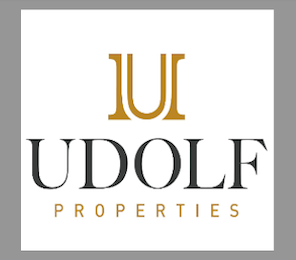By Diane Cole
A dapt or die: this principle now permeates discussions among not just biologists but anthropologists, sociologists, and even theologians seeking the origins of religion in an evolutionary need for group survival. The adage is especially applicable to a 1934 classic of Jewish evolution, Rabbi Mordecai M. Kaplan’s “Judaism as a Civilization: Toward a Reconstruction of American Jewish Life.” While Kaplan’s contemporaries, theologians Martin Buber and Abraham Joshua Heschel, remain widely read today, Kaplan (1881-1983) is relatively unknown. Yet, what would contemporary American Judaism be without him?
Kaplan introduced the synagogue bat mitzvah (his daughter, Judith, was the first bat mitzvah, in 1922). He promoted Jewish community centers, created the concept of Judaism as an evolving civilization, and allowed Jews to “reconstruct” Judaism with new, relevant meanings. As a professor at the Conservative movement’s Jewish Theological Seminary (JTS) for more than 50 years, he influenced several generations of rabbis. After he retired from JTS in 1963, he helped found the Reconstructionist movement.
Kaplan was — still is — often criticized as radical or even heretical. In 1945 the Union of Orthodox Rabbis (UOR) of the United States and Canada not only excommunicated Kaplan but burned his “Sabbath Prayer Book.” Kaplan’s introduction to the Prayer Book described it as merely an adaptation of the Orthodox prayer service for the “modern spirit.” But that spirit was a rationalist cast of mind that questioned the supernatural aspects of Judaism. “Since Scripture came into being over a long period of time and through human instrumentalities,” he wrote, “this prayer book avoids implying the historical accuracy of those Biblical episodes which relate miracles and supernatural events.”
Kaplan also changed the liturgy by removing references to Jews as the chosen people; he kept references to the immortality of the soul but removed any mention of corporeal resurrection. To him, these changes were evolutionary survival mechanisms, like the change to rabbinic Judaism after the destruction of the Second Temple. To the UOR, the changes constituted heresy. To the outside world, the attack on Kaplan was shocking enough — in light of fresh memories of Nazi bonfires of Jewish books — so that it was reported in the New York Times and Time magazine.
So, who was this “heretic”?
Kaplan was born in Lithuania in 1881, the son of a distinguished rabbi who brought the family to New York in 1889. The younger Kaplan graduated from City College and was ordained at JTS in 1902. Working toward his doctorate in philosophy at Columbia, he was drawn to the Pragmatist philosophers and to sociologists and anthropologists studying the evolutionary benefits of religion. He also studied with Felix Adler, founder of the non-theistic Ethical Culture Society. Adler had angered many Jews, including Kaplan, who felt that Ethical Culture had “de-Judaized” Judaism. Yet Kaplan was intrigued by Adler’s emphasis on ethics, social justice, and community action.
Throughout his life, Kaplan retained his belief in God and his observance of Jewish laws. But his studies convinced him that there were too many internal contradictions, and too much archeological evidence, to allow one to view the Scriptures as the work of God rather than human beings; and his goal became the development of a Jewish theology that could reconcile reason and faith and enhance a sense of communal belonging. In 1922 he left a traditional New York congregation to establish his own synagogue, the Society for the Advancement of Judaism, which became the laboratory for Kaplan’s ideas about reinterpreting traditional ritual and liturgy.
In Kaplan’s “reconstructed” formulation, the Jewish religion was the “soul” of the Jewish people—but just one element defining Jewish civilization. Other elements were the Jews’ ethical principles, sacred scripture, language, land (Kaplan was an early, ardent Zionist), beliefs, traditions, literature, and history. Individuals could belong to and identify with the Jewish people as a culture and civilization regardless of their beliefs and practices.
In his 1937 work “The Meaning of God in Modern Jewish Religion,” Kaplan also questioned the relevance of laws whose interpretation had not changed in centuries: The very notion that any text written hundreds of years ago, at a time when the social situation was radically different from what it is today, can give us clear and valuable guidance in deciding, ethically, issues that did not arise until recent times is utterly antagonistic to the modern evolutionary outlook.
As Kaplan said elsewhere, the challenge was to take Torah seriously without taking it literally.
For Kaplan, God was not an omnipotent, supernatural being but the “power that makes for salvation,” an internal force that allowed individuals to seek goodness and moral perfection for themselves and the world. Such “salvation” would be found not in the next world but in this one, through discovery of personal meaning and achievement of positive social goals. Kaplan was, in this sense, self-help guru long before the phrase was invented. He was criticized for his references to “salvation,” a word closely associated with Christianity. But Kaplan answered that while Christian salvation occurs in the hereafter, the Bible also uses the term to denote “redemption from evil and self-fulfillment in this world.” He explained, “Salvation means deliverance from those evils, eternal and internal, which prevent man from realizing his maximum potentialities”—in positive terms, “the maximum fulfillment of those human capacities which entitle man to be described as ‘made in the image of God.’”
How radical were Kaplan’s ideas? His beliefs echo not only the Pragmatists and Transcendentalists but Spinoza, excommunicated by his 17th century Jewish community for, among other things, denying God’s supernatural powers and the notion of an afterlife. To traditional rabbis, neither Spinoza’s God nor Kaplan’s was recognizable.
Still, by the time Kaplan died at the age of 102, those ideas seemed less radical. The dense, often awkward quality of his writing is one fact that has kept potential readers away; another is that, as the decades passed, many of his once-controversial ideas became conventional.
Even Kaplan’s idea that that the Torah was composed by different authors is now widely accepted. Etz Hayim (“Tree of Life”), the Torah and commentary volume used in most Conservative synagogues today, includes this formulation: “Detailed study . . . has led modern critical scholarship to theorize that the Torah is a compilation from several sources.” And “[b]ecause the Torah, in this perspective, is an amalgam,” it contains “factual inconsistencies; contradictory regulations; and differences in style, vocabulary, and even theology.” While this wording does not endorse a theory of multiple authorship, it leaves the door open for readers who wish to do so.
It is a door that more 21st-century Jews might enter, if they knew it existed. These days, when discussion of religion often veers between polar extremes of fundamentalist acceptance and atheistic rejection, Kaplan’s approach—adapting, or reconstructing, rather than abandoning completely—seems less radical than just plain practical. Kaplan’s emphasis on Jewish “civilization,” of which religion is just one part, allows secular Jews to remain connected by belonging, even without believing. And if you’re not sure? Kaplan’s naturalistic view of religion embraces a broad spectrum of belief, from deep spirituality to agnosticism. With mainstream religious affiliation dwindling throughout America, maybe it’s time to remember Mordecai Kaplan’s message: adapt or die.
Diane Cole is the author of the memoir “After Great Pain: A New Life Emerges,” and writes for many national publications, including Psychotherapy Networker, where she is a contributing editor.
This article is re-printed wit permission of Jewish Ideas Daily (www:jewishidearsdaily.com), where it first appeared.








 Southern New England Jewish Ledger
Southern New England Jewish Ledger








